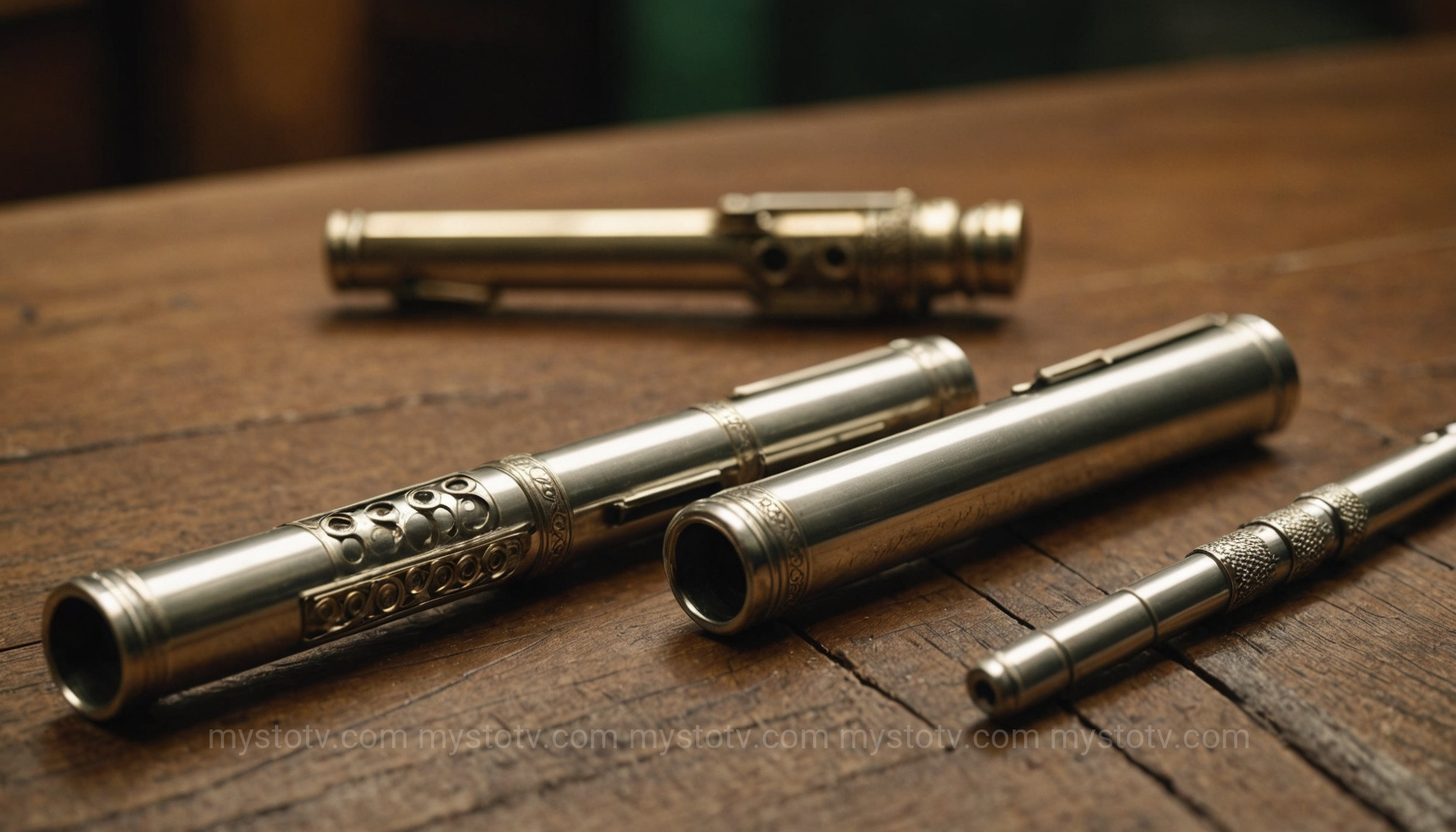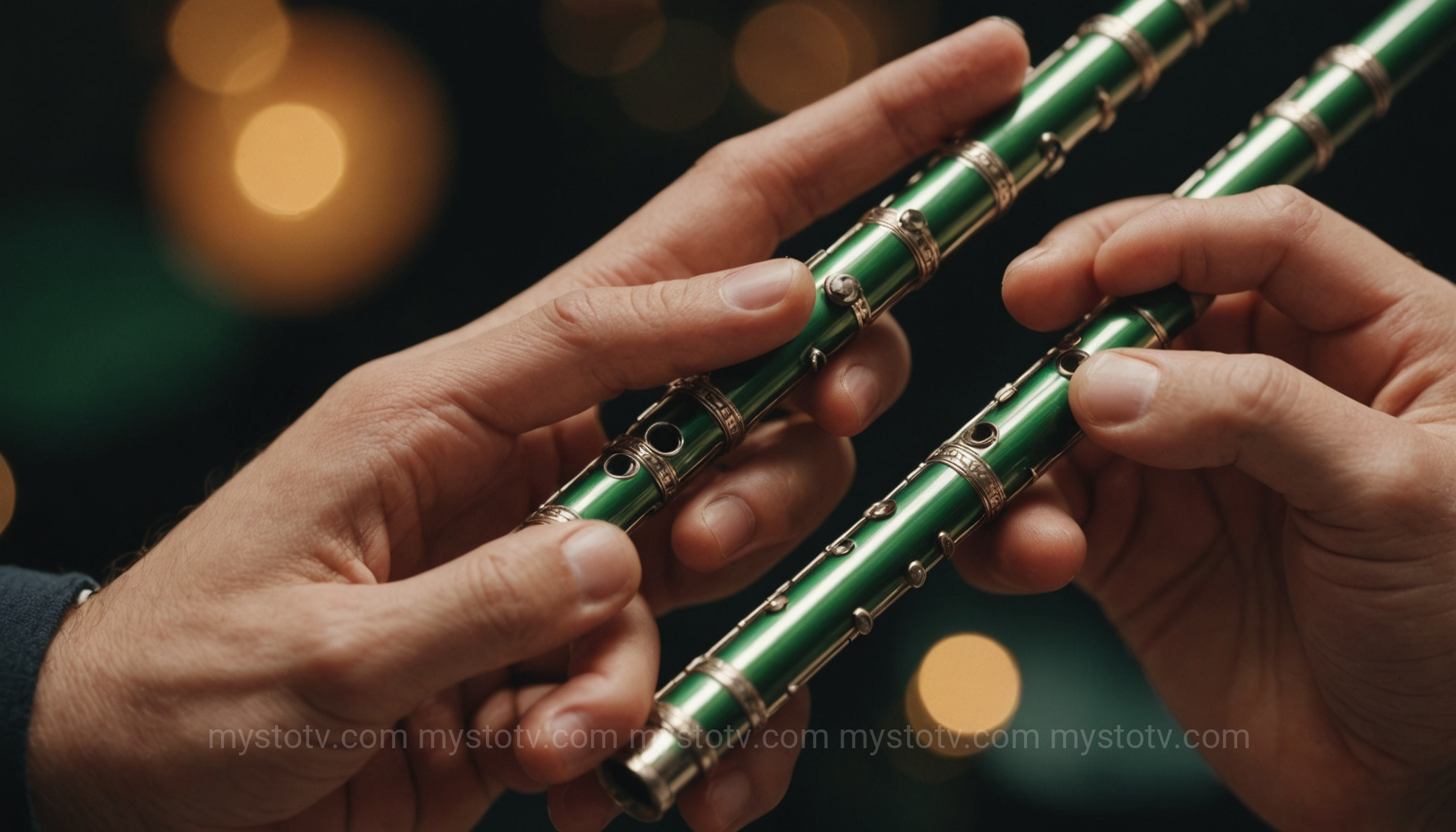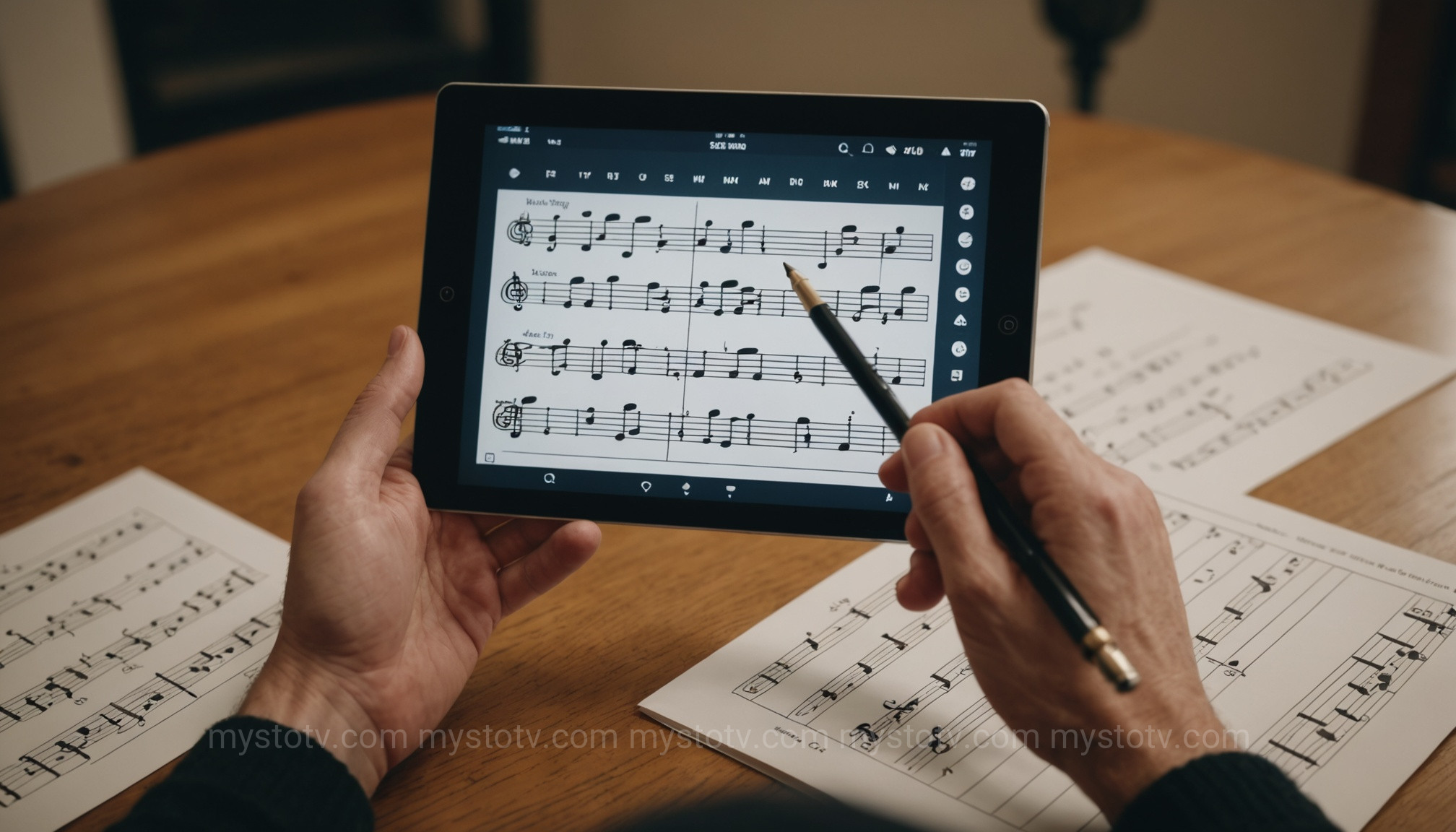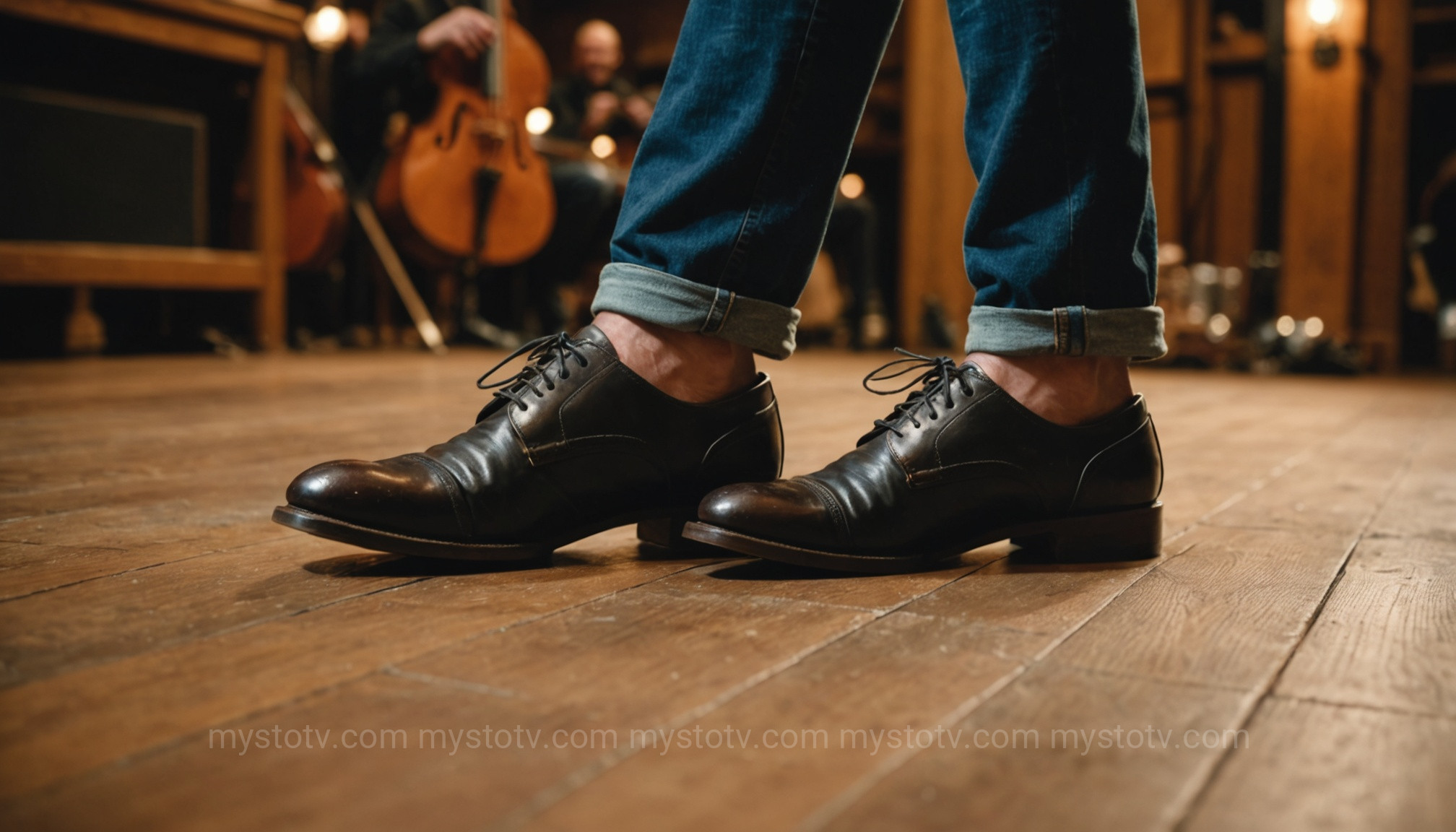Contents
- 1 Start Your Irish Folk Journey: A Guide to Learning the Tin Whistle in 7 Days
- 2 Before You Start Learning the Tin Whistle: Choosing Your Instrument
- 3 Day 1 of Learning the Tin Whistle: The Basics of Holding and Breathing
- 4 Day 2 of Learning the Tin Whistle: Your First Notes and the D Major Scale
- 5 Day 3 of Learning the Tin Whistle: Playing Your First Simple Tune
- 6 Day 4 of Learning the Tin Whistle: Expanding Your Note Range (The Second Octave)
- 7 Day 5 of Learning the Tin Whistle: Introduction to Simple Ornamentation
- 8 Day 6 of Learning the Tin Whistle: Rhythm and Timing for Jigs and Reels
- 9 Day 7 of Learning the Tin Whistle: Putting It All Together and Next Steps
- 10 Frequently Asked Questions About Learning the Tin Whistle
- 11 Conclusion
- 12 References
Start Your Irish Folk Journey: A Guide to Learning the Tin Whistle in 7 Days
I still remember the first time I walked into a pub in Galway and was hit by the lively, infectious sound of a traditional Irish music session. In the corner, a fiddler, a guitarist, and a man playing a simple metal pipe were creating a sound so joyful it filled the entire room. That pipe, the tin whistle, seemed like a magical key to a whole world of music. I thought learning an instrument would be a years-long, daunting task, but I bought a cheap whistle the next day anyway. I was surprised to find that the initial steps of learning the tin whistle were far more accessible than I'd imagined. This guide is born from that experience—an honest, practical 7-day plan to get you from holding the instrument to playing your first tune, starting your own Irish folk journey.
Before You Start Learning the Tin Whistle: Choosing Your Instrument

Before you can play a note, you need an instrument. The world of tin whistles can seem surprisingly vast, but for a beginner, the choice is simple. The most crucial part of this initial phase isn't finding the "perfect" whistle, but a functional one that won't hinder your progress. An unplayable instrument is the fastest way to get discouraged.
Choosing a Whistle in the Key of D
The vast majority of Irish traditional music is played on a whistle in the key of D. This is the undisputed standard. When you look at tutorials, fingering charts, and tune books, they will almost universally assume you have a D whistle. Buying a whistle in another key (like C or G) will only lead to confusion as you start your journey of learning the tin whistle. Reputable, affordable brands for beginners include Feadóg, Walton's, and Clarke. A simple brass or nickel whistle from one of these makers will cost very little and serve you perfectly.
Analysis: Why the 'D' Whistle Dominates
The prevalence of the D whistle in Irish music is rooted in its compatibility with other common traditional instruments, particularly the fiddle and the uilleann pipes. These instruments find keys like D major and G major (which are easy on a D whistle) very natural to play in. By starting with a D whistle, you are not just learning an instrument; you are learning the language of the tradition, ensuring that when you're ready, you can play along with others.
Day 1 of Learning the Tin Whistle: The Basics of Holding and Breathing

Today is all about fundamentals. It might feel slow, but mastering your hold and breath is the bedrock of good playing. A sloppy grip or uncontrolled breath will result in squeaks and an airy tone, common frustrations that cause many beginners to give up. Getting this right from day one sets you up for success.
Proper Posture and Grip
Sit or stand up straight to allow for full lung capacity. Hold the whistle with your non-dominant hand on top (closer to the mouthpiece) and your dominant hand on the bottom. For most people, this means the left hand is on top. Cover the holes with the soft pads of your fingers, not the very tips. Your grip should be relaxed but firm enough to create an airtight seal. Crooked fingers will let air escape, making it impossible to produce a clear note.
Breath Control Essentials
Think of your breath as a gentle, steady column of air. Don't puff your cheeks. Breathe from your diaphragm and push the air out in a smooth stream. Try this exercise: without the whistle, say the word "too" or "doo." Feel that little kick of air from your tongue at the start? This technique, called tonguing, is how you'll start each note cleanly. For now, just practice blowing gently and steadily into the whistle with all holes uncovered to produce a high C# (C sharp) and then with the top hole covered to produce a B. Focus on making the sound as stable and pure as possible.
Analysis: The Foundation of Tone
This initial stage of learning the tin whistle is a lesson in subtlety. The difference between a beautiful, warm note and a piercing squeak is often just a slight variation in breath pressure. By focusing on breath *before* fingerings, you're prioritizing tone production. Many online tutorials jump straight to scales, but without this foundational breath control, those scales will sound weak and inconsistent. This deliberate focus on breath is the secret to sounding like a musician, not just someone making noise.
Day 2 of Learning the Tin Whistle: Your First Notes and the D Major Scale

With the basics of breath and grip in place, it's time to make some music. Today's goal is to learn the first octave of the D major scale, which is the home base for countless Irish tunes. This is a significant step in learning the tin whistle, as it unlocks the ability to play simple melodies.
Learning the Notes
Starting with all six holes covered, you will produce the lowest note on your whistle: a D. As you lift each finger, starting from the bottom (your dominant hand), the pitch will rise. Here is the D major scale:
-
-
- D: All six holes covered.
- E: Top five holes covered (lift bottom finger).
-
-
F#:
-
- Top four holes covered (lift bottom two fingers). -
G:
-
- Top three holes covered (lift all fingers of the bottom hand). -
A:
-
- Top two holes covered. -
B:
-
- Top one hole covered. -
C#:
-
- All holes uncovered. -
D (high):
- This is the start of the second octave, which we'll cover later. For now, end on C#.
Practice going up and down the scale slowly. Use the "too" or "doo" tonguing technique to start each note cleanly. Your goal is not speed, but clarity and evenness between notes.
Analysis: Why This Scale First?
The D major scale is not just a random collection of notes; it's the melodic framework for a huge portion of the Irish repertoire. By internalizing this scale, you're not just doing a technical exercise. You are learning the fundamental building blocks of the music you want to play. Every time you play the scale, you're also training your ear to recognize the characteristic sounds of the tradition.
Day 3 of Learning the Tin Whistle: Playing Your First Simple Tune
This is the day your practice pays off. The abstract notes and scales will now transform into a recognizable melody. The feeling of playing your first tune, no matter how simple, is a massive confidence booster and a critical milestone in your journey of learning the tin whistle.
Choosing an Easy Tune
Don't try to tackle a complex reel or jig just yet. Start with a tune that primarily uses the D major scale notes you learned yesterday. Nursery rhymes are perfect for this. "Twinkle, Twinkle, Little Star" or "Mary Had a Little Lamb" are excellent choices. They move slowly and use simple melodic steps.
For example, "Mary Had a Little Lamb" starts: B, A, G, A, B, B, B. You already know these notes! Find the notes online (a quick search for "tin whistle tabs for Mary Had a Little Lamb" will work) and play them one by one. Go as slowly as you need to. Focus on smooth transitions between the fingerings.
Analysis: From Technics to Music
This step is a crucial psychological bridge. Practicing scales can feel robotic, but applying them to a melody connects the technical exercise to an emotional, musical result. It proves that the work you've put in has a tangible, rewarding outcome. This is what solidifies the habit of practice and makes you want to come back the next day. It confirms that learning the tin whistle is an achievable goal.
Day 4 of Learning the Tin Whistle: Expanding Your Note Range (The Second Octave)
Most tunes don't stay in one octave. To play a wider variety of music, you need to access the higher notes. Today is about learning to control your breath to jump into the second, higher octave. This skill separates the novice from the intermediate player.
The "Overblowing" Technique
The fingerings for the second octave are mostly the same as the first. The difference is your breath. To hit a note in the second octave, you need to blow slightly harder and faster. This is often called "overblowing." It’s a delicate balance; too little air and you'll get the low note, too much and you'll get a shrill squeak.
Practice by playing a low A (top two holes covered) with a gentle breath. Then, keeping the same fingering, increase the air pressure until the note "jumps" up to a high A. Try to make this jump clean. Go back and forth between the low A and high A to get a feel for the required breath control. Once you're comfortable, practice the D major scale again, this time continuing into the second octave.
Analysis: The Importance of Dynamic Breath
Mastering the second octave is fundamentally an exercise in dynamic breath control. It teaches you that your airflow is not a static "on" or "off" but a tool to be modulated. This skill is not just for hitting high notes; it's the foundation for adding expression and volume changes to your playing later on. This is a more advanced aspect of learning the tin whistle that starts right here.
Day 5 of Learning the Tin Whistle: Introduction to Simple Ornamentation
Irish music is famous for its ornamentation—the little trills and flourishes that give it a lively, decorated feel. While complex ornaments take years to master, you can start with the most basic and common one today: the cut. This is a fun step in learning the tin whistle that adds authentic flavor to your playing.
How to Play a "Cut"
A cut is a very fast grace note played by quickly tapping and releasing a finger above the main note you are playing. For example, if you are playing a G (top three holes covered), you can perform a "cut" by very quickly tapping and releasing the B finger (the second finger from the top). The sound is less of a distinct note and more of a percussive "blip" that gives the main note some attack.
Practice playing a long G note and adding cuts. Then try adding them to the tunes you know. For example, in "Mary Had a Little Lamb," try playing it as: (cut)B, A, G, A, (cut)B, (cut)B, (cut)B. It instantly sounds more "Irish."
Analysis: Adding Rhythmic Drive
Ornaments like cuts are not just decorative; they are rhythmic. They add a percussive energy that helps drive the tune forward, which is essential for dance music like jigs and reels. By introducing a simple cut, you are beginning to think about rhythm and melody simultaneously, a key mental shift for any aspiring traditional musician.
Day 6 of Learning the Tin Whistle: Rhythm and Timing for Jigs and Reels

Irish music is dance music at its heart. Understanding the basic rhythms of jigs and reels is just as important as knowing the notes. Today, you'll put the whistle down for a bit and focus on internalizing these rhythms. This is a frequently overlooked but vital part of learning the tin whistle.
Feeling the Rhythm
Find recordings of simple jigs and reels. A jig has a 6/8 time signature, which feels like a "ONE-two-three-FOUR-five-six" or "DUM-da-da-DUM-da-da" pattern. Think of the word "pineapple" repeated: "pine-ap-ple pine-ap-ple." Tap your foot along. A reel is in 4/4 time and has a more straightforward "ONE-two-three-four" feel, with emphasis on beats 1 and 3. It feels faster and more driving.
Once you can feel the pulse, try playing a simple scale, like the D scale, in that rhythm. For a jig, you might play three notes per beat: D-E-F#, G-A-B. This isn't a tune, but an exercise to get your fingers and your sense of rhythm working together.
Analysis: Music is More Than Notes
Many self-taught musicians focus so much on getting the "right notes" that they forget the rhythm. Their playing sounds robotic and lifeless. By dedicating a day to just listening and tapping your foot, you are training your internal clock. This makes learning actual jigs and reels much easier because you already understand their rhythmic structure. You're learning the "feel" of the music, not just its mechanics. When you do learn a jig, if you want to sound authentic, you can revisit simple ornamentation and apply it within this new rhythmic context.
Day 7 of Learning the Tin Whistle: Putting It All Together and Next Steps
On this final day of your introductory week, the goal is to consolidate your new skills and create a plan for continuing your journey. You have learned to hold the whistle, control your breath, play a full scale in two octaves, play a simple tune, and add basic ornamentation. This is a phenomenal start.
Review and Play
Spend today reviewing everything. Warm up with your scales. Practice jumping between octaves. Play "Mary Had a Little Lamb" and try adding a few cuts. Can you play it with more of a jig or reel rhythm? Record yourself on your phone and listen back. Don't be critical; just notice where your notes are clear and where they might be airy or squeaky. This self-assessment is key to continued improvement in learning the tin whistle.
Where to Go From Here
Your 7-day journey is just the beginning. To continue improving:
- Learn More Tunes: Websites like The Session (thesession.org) have enormous databases of traditional tunes. Start with more simple ones like "The Foggy Dew" or "Swallowtail Jig."
- Listen Actively: Listen to as much Irish music as you can. Pay attention to how experienced players phrase melodies and use ornaments.
- Find a Teacher or Community: If possible, find a local teacher or a music session. Playing with others is the fastest and most enjoyable way to learn.
Analysis: From Guided Learning to Self-Direction
This 7-day plan was designed to give you a structured, manageable start. The goal of Day 7 is to transition you from this guided path to becoming a self-directed learner. By knowing what to practice (scales, tunes, rhythm) and how to find new material, you now have the tools to build your own practice routine. The journey of learning the tin whistle never really ends; it just evolves, and now you have the map to continue exploring.
Frequently Asked Questions About Learning the Tin Whistle
Do I need to learn to read sheet music?
No, you don't. While it can be helpful, traditional Irish music has a strong aural tradition, meaning it's often learned by ear. Many resources use "tin whistle tablature," a simplified system that shows you which holes to cover. This is a very accessible way to learn new tunes without formal music theory.
What's the difference between a $15 whistle and a $150 whistle?
A cheaper whistle (like a Feadóg or Walton's) is perfect for beginners. They are durable and play in tune. More expensive, "professional" whistles are often made of different materials (like polymer or wood) or are "tuneable," meaning you can slightly adjust the pitch. They may have a more complex or "breathy" tone and require more precise breath control. Stick with an affordable one until you are an intermediate player and have developed a preference for a certain sound.
My whistle sounds very airy or breathy. How can I fix this?
This is almost always due to two things. First, check your finger seals. Even a tiny leak from under the pad of your finger will create an airy sound. Press down more firmly (but stay relaxed). Second, it's about breath control. You might be blowing too softly and without focus. Practice the "too" tonguing exercise and think of your breath as a laser-focused column of air, not a wide, gentle breeze. This will help you achieve a clearer tone.
Conclusion
In just one week, you've gone from a curious beginner to a musician capable of playing a melody. You've built a solid foundation in posture, breath control, fingering, and rhythm. The path to learning the tin whistle is a rewarding one, and you’ve already taken the most important steps. This simple instrument is a gateway to a rich tradition of music and community. Don't worry about perfection; focus on the joy of making music. Keep practicing, keep listening, and keep that lively pub session in your mind's eye. Your Irish folk journey has truly begun.
References
- The Session. (n.d.). Community-based tune resource for traditional Irish music. Retrieved November 2023. https://thesession.org/
- Larsen, G. (2003). The Essential Guide to Irish Flute and Tin Whistle. Mel Bay Publications.